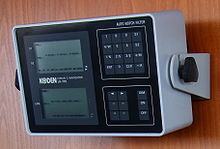远距离无线电导航系统


远距离无线电导航系统,英文缩写LORAN,为“Long Range Navigation”(远程导航)的缩写,中文音译为“罗远”、“罗兰”或“劳兰”,是在二战期间由美国开发的一种无线电导航及授时系统。
LORAN
目前已衍生了多个版本。LORAN系统是在二战期间由美国开发的双曲线无线电导航系统。它类似于英国的Gee系统,但使用更低的频段(1750kHz-1950kHz),可在1500英里(约2400公里)的距离内进行导航定位,准确度为数十英里。其最早运用于穿过大西洋的舰队和远程巡逻机,之后广泛用于太平洋战区的舰船和飞机。早期LORAN系统成本昂贵,需要用到阴极射线管(CRT)显示器进行显示,这限制了军事和大规模商业使用,这一系统也无法大范围推广。
到了20世纪50年代,随着电子技术突飞猛进,更高精度的系统随之诞生。这一时期,美国海军开发了LORAN-B系统,导航精度缩小到几英尺内。但由于遇到周期识别困难问题,Loran-B被弃用。之后美国空军主导开发了Cyclan导航系统,这一系统后来被正式命名为“LORAN-C”并改由海军接手。LORAN-C导航系统使用长波波段,定位距离更远,精度可达数百英尺以内。1958年,美国海岸警卫队接管了LORAN-B和LORAN-C系统。
尽管Loran-C表现更好,但原始版本的LORAN(后来被称为“LORAN-A”或“标准LORAN”)在之后的一段时间内却反而更受欢迎,其主要原因是当时美国海军大量换装,将旧有的LORAN-A设备替换为LORAN-C设备,导致LORAN-A设备市场价格下降。这一局面直到20世纪70至80年代才得到改变。这一时期,随着微电子技术发展,LORAN-C设备成本降低,LORAN-A逐渐被淘汰。
1968年,LORAN-D系统试验成功。该系统在罗兰-C原理基础上研制,但功率较小,主要用于军事用途[1]。
目前世界上使用最广泛的是LORAN-C系统。其工作频率是100kHz,作用距离可达2000公里,定位精度优于300米。LORAN-C不能确定高度,只能提供二维导航。应用领域包括:飞机航线导航、终端导航和非精密进场的航空应用、陆上载体定位和车辆自动调度管理方面的陆地应用、海上和空中交通管制应用、高精度区域差分应用、精密授时和与其它导航系统组合应用等[2]。
eLORAN
时至今日,LORAN-C以及之后的“增强罗兰”(Enhanced Loran,简称eLORAN)被用于GPS系统的备份和增强系统,世界各地也开始逐渐以eLORAN取代LORAN-C系统[3]。
参考资料
参考书目
- Blanchard, Walter. Hyperbolic Airborne Radio Navigation Aids. The Journal of Navigation. September 1991, 44 (3)..
Proc 2012 is a modified version hereof.
- Cooke, C. M.; et al, The Tactical Use of Radar in Aircraft, Radar Bulletin, No. 2 A, Washington, DC: Naval Department, 1945 [2017-08-31], (原始内容存档于2017-08-26).
- Denny, Mark, The Science of Navigation: From Dead Reckoning to GPS, Baltimore: Johns Hopkins University Press, 2012, ISBN 1-4214-0512-1.
- Dickinson, William T., Engineering Evaluation of the LORAN–C Navigation System (PDF), Washington, DC: Jansky & Bailey/U.S. Coast Guard, 1959 [2017-08-31], (原始内容存档 (PDF)于2008-09-25)
- Dickinson, William T., The LORAN-C System Of Navigation (PDF), Washington, Dc: Jansky & Bailey, 1962 [2017-08-31], (原始内容存档 (PDF)于2013-07-22)
- Halford, J. H.; Davidson, D.; Waldschmitt, J. A., History of LORAN (PDF), Pierce, J. A.; McKenzie, A. A.; Woodward, R. H. (编), LORAN: Long Range Navigation, New York: McGraw Hill: 19–51, 1948 [2017-08-31], (原始内容存档 (PDF)于2016-09-23)
- Hefley, Gifford, The Development of Loran-C Navigation and Timing, NBS Monograph 129, Boulder, CO: U.S. National Bureau of Standards, 1972.
- Helfrick, Albert. Principles of Avionics 7th. Leesburg, VA: Avionics Communications. 2012. ISBN 1-885544-27-8..
- Hollister, Jane. News Briefs. Boating. August 1978, 44 (2): 10,N4f.
- McElroy, Gil, Loran-C History, Proc, Jerry (编), Hyperbolic Radionavigation Systems, Etobicoke, Ontario, 2004 [2017-08-31], (原始内容存档于2017-05-01).
- Parrott, D'Arcy Grant, Loran, Vol 1: Early Electronic History, The Coast Guard at War, Vol. IV, Washington, DC: U.S. Coast Guard, 1944 [2017-08-31], (原始内容存档于2014-04-16)
- Peterson, Benjamin B., Electronic Navigation Systems, Whitaker, Jerry C. (编), The Electronics Handbook 2nd, Tailor & Francis/IEEE Press: 1847–1877, 2005, ISBN 0-8493-1889-0
- Pierce, John Alvin, Electronic Aids to Navigation, Marton, Ladislaus (编), Advances in Electronics & Electron Physics, Vol. 1, New York: Academic Press: 425–451, 1948, ISBN 0-12-014501-4, doi:10.1016/S0065-2539(08)61098-7
- Proc, Jerry, Loran-A, Hyperbolic Radionavigation Systems, Etobicoke, Ontario, 2012 [2017-08-31], (原始内容存档于2009-08-05).
- Sand, Stephan; Dammann, Armin; Mensing, Christian, Positioning in Wireless Communications Systems, Hoboken: John Wiley & Sons, 2004, ISBN 1-118-69409-0
Text is available under the CC BY-SA 4.0 license; additional terms may apply.
Images, videos and audio are available under their respective licenses.
